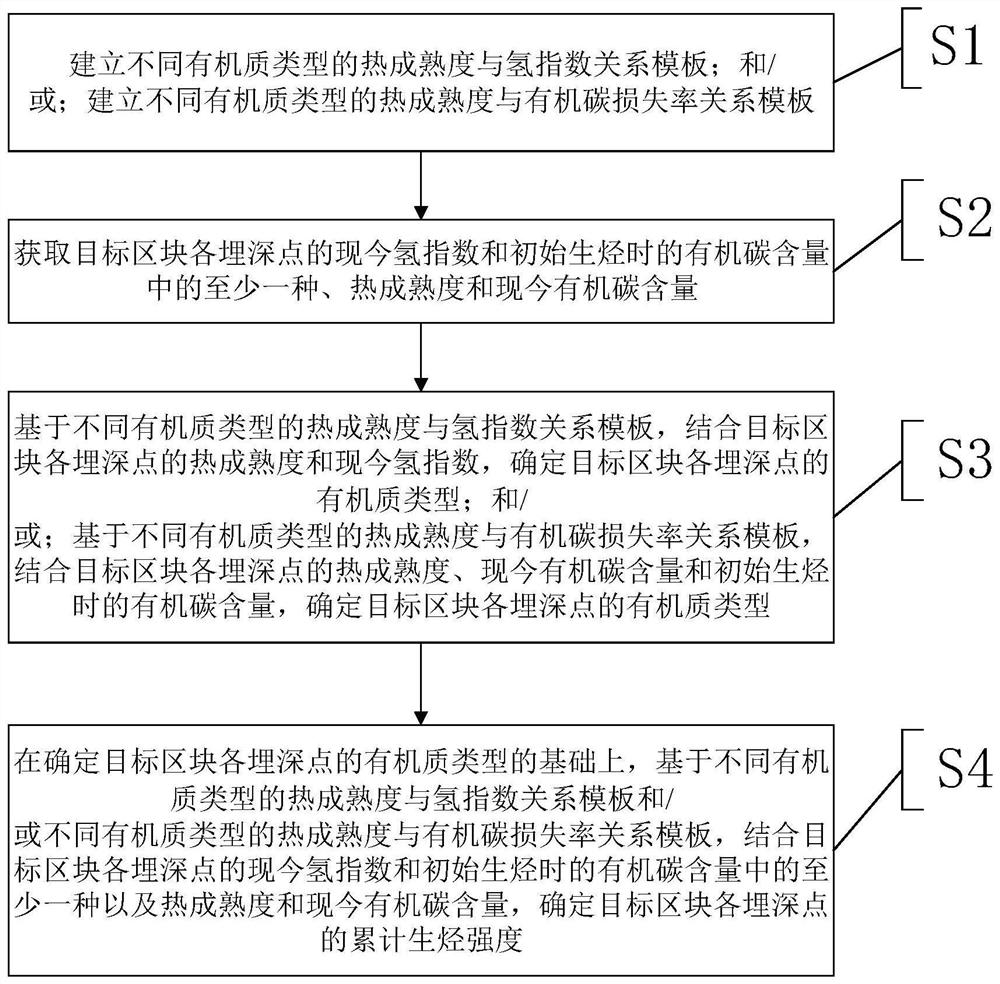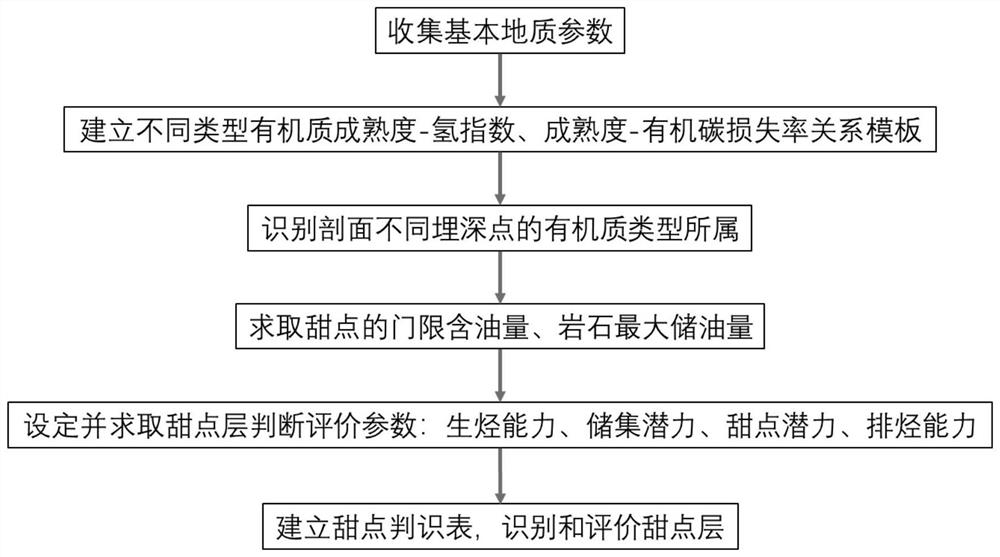Determination method of cumulative hydrocarbon generation intensity and identification and evaluation method of dessert layer for clastic rock
A technique for determining hydrocarbon generation intensity and determination method, which is applied in the field of petroleum geological exploration, and can solve problems such as missing and lack of operable methods for shale oil layers, and achieve rapid identification and evaluation, and accurate and reliable identification results
- Summary
- Abstract
- Description
- Claims
- Application Information
AI Technical Summary
Problems solved by technology
Method used
Image
Examples
Embodiment 1
[0242] This embodiment provides a method for identifying and evaluating a sweet spot layer, and takes Well BNE-1 in an oilfield as an example to illustrate the method for identifying and evaluating a sweet spot layer.
[0243] see image 3 , the method specifically includes the following steps:
[0244] Step 1. Collect geological parameters:
[0245] On the geological section measured in Well BNE-1, the samples at each buried depth of Well BNE-1 (the cuttings were sampled at 5m intervals, all the samples of the shale section were taken, and the sections without samples were taken as sandstone layers by default). Solution analysis (each sample is divided into two parts, one of which is extracted and washed with dichloromethane, and Rock-Eval pyrolysis evaluation analysis and carbon and sulfur element analysis are carried out on the samples before and after oil washing respectively to obtain the basic data of the parameters used) , to obtain thermal maturity parameters, hydrogen...
Embodiment 2
[0306] This embodiment provides a method for identifying and evaluating a sweet spot layer, and takes Well BNE-1 in an oilfield as an example to illustrate the method for identifying and evaluating a sweet spot layer.
[0307] see image 3 , the method specifically includes the following steps:
[0308] Step 1. Collect geological parameters:
[0309] Obtain the well logging curve of BNE-1 well; use the Delta Log R model of Passey (1990) to determine the current organic carbon content and the organic carbon content at the time of initial hydrocarbon generation (that is, when the vitrinite reflectance is 0.5%) at each buried depth ; Among them, the Delta LogR model is:
[0310] TOC=DeltaLogR×10 (2.297-0.1688×LOM)
[0311] Among them, DeltaLogR=lg(RT÷RT_Baseline)-2.5×(RHOB–RHOB_Baseline)
[0312] LOM=0.0989×VR 5 -2.1587×VR 4 +12.392×VR 3 -29.032×VR 2 +32.53×VR-3.0338
[0313] In the formula, RT is the resistivity value of the target buried depth point, in Ω m; RT_Baseli...
PUM
 Login to View More
Login to View More Abstract
Description
Claims
Application Information
 Login to View More
Login to View More - R&D
- Intellectual Property
- Life Sciences
- Materials
- Tech Scout
- Unparalleled Data Quality
- Higher Quality Content
- 60% Fewer Hallucinations
Browse by: Latest US Patents, China's latest patents, Technical Efficacy Thesaurus, Application Domain, Technology Topic, Popular Technical Reports.
© 2025 PatSnap. All rights reserved.Legal|Privacy policy|Modern Slavery Act Transparency Statement|Sitemap|About US| Contact US: help@patsnap.com



